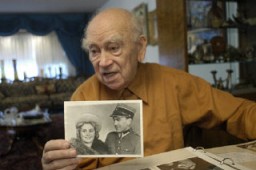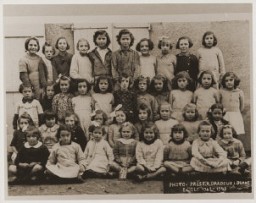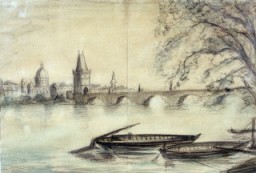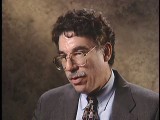You searched for: %E4%B9%B0%E7%90%83%E5%B9%B3%E5%8F%B0,%E4%B9%B0%E7%90%83%E7%BD%91%E7%AB%99,%E4%B9%B0%E7%90%83%E7%BD%91%E5%9D%80,%E3%80%90%E4%B9%B0%E7%90%83%E5%9C%B0%E5%9D%80%E2%88%B63399yule.com%E3%80%91%E4%B8%96%E7%95%8C%E6%9D%AF%E4%B9%B0%E7%90%83%E6%8A%80%E5%B7%A7,%E4%B9%B0%E7%90%83%E8%A7%84%E5%88%99,%E4%B9%B0%E7%90%83app,%E4%B9%B0%E7%90%83%E8%BD%AF%E4%BB%B6,%E3%80%90%E4%B8%96%E7%95%8C%E6%9D%AF%E8%B5%8C%E7%90%83%E5%B9%B3%E5%8F%B0%E2%88%B63399yule.com%E3%80%91
<< Previous | Displaying results 131-140 of 151 for "%E4%B9%B0%E7%90%83%E5%B9%B3%E5%8F%B0,%E4%B9%B0%E7%90%83%E7%BD%91%E7%AB%99,%E4%B9%B0%E7%90%83%E7%BD%91%E5%9D%80,%E3%80%90%E4%B9%B0%E7%90%83%E5%9C%B0%E5%9D%80%E2%88%B63399yule.com%E3%80%91%E4%B8%96%E7%95%8C%E6%9D%AF%E4%B9%B0%E7%90%83%E6%8A%80%E5%B7%A7,%E4%B9%B0%E7%90%83%E8%A7%84%E5%88%99,%E4%B9%B0%E7%90%83app,%E4%B9%B0%E7%90%83%E8%BD%AF%E4%BB%B6,%E3%80%90%E4%B8%96%E7%95%8C%E6%9D%AF%E8%B5%8C%E7%90%83%E5%B9%B3%E5%8F%B0%E2%88%B63399yule.com%E3%80%91" | Next >>
-
Life After the Holocaust: Norman Salsitz
ArticleAfter WWII and the fall of the Nazi regime, Holocaust survivors faced the daunting task of rebuilding their lives. Listen to Norman Salsitz's story.

-
Oradour-sur-Glane
ArticleIn 1944, Waffen-SS troops massacred residents of Oradour-sur-Glane, a small village in France. Learn about the German occupation and destruction of the village.

-
Forced Labor: In Depth
ArticleForced labor, often pointless, humiliating, without proper equipment, clothing, nourishment, or rest, was a core feature in the Nazi camp system from its beginnings in 1933.

-
Theresienstadt: Cultural Life
ArticleDespite terrible living conditions and the constant threat of deportation, there was a highly developed cultural life in the Theresienstadt camp-ghetto. Learn more.

-
Peter Black describes the role of historians in researching war crimes cases for OSI
Oral HistoryIn the 1980s and 1990s, historian Peter Black worked for the US Department of Justice Office of Special Investigations, as part of a team tracking and prosecuting suspected war criminals. Black later served as the Senior Historian at the United States Holocaust Memorial Museum.

-
Chaia Gurvitz
ID CardFrom a Jewish family, Chaia lived outside Kovno, a city with a large Jewish population that was renowned for its Hebrew school system. Chaia ran a grocery store with her husband, a retired shoemaker, and their daughter Yenta. 1933-39: Chaia is expecting her daughter Feiga, Feiga's husband, Josef, and her grandson, Abraham, for dinner. Feiga works so hard all week in her beauty shop, Chaia is glad she can help out by preparing the big Sunday meal. She has baked a special cake for Abe. Chaia hopes the…

-
Feiga Malnik
ID CardRaised in a Jewish family, Feiga lived with her husband, Josef, in Kovno, a city with a large Jewish community of 38,000. Kovno was situated at the confluence of two rivers, and with its opera company, chic stores and lively nightclubs, it was often called "Little Paris." Feiga was a beautician and Josef was a barber, and together they ran a shop in downtown Kovno. 1933-39: Every day Josef and Feiga walk to their shop, which is near their house. It's hard work, being a beautician--Feiga is on her feet…

-
Josef Malnik
ID CardRaised in a Jewish family, Josef lived with his wife, Feiga, in Kovno, a cosmopolitan city that was picturesquely situated at the juncture of two rivers and was known as the "Little Paris." Josef was a barber, his wife was a beautician, and together they ran a shop in downtown Kovno. 1933-39: Every day Josef and Feiga walk to their shop which is not far from their house. It's hard work being a barber--Josef is on his feet most of the day, seven days a week including a couple of hours on Sunday. He has…

-
Personal Stories: Jewish Partisans
ArticleBrowse a series of short biographies from the Jewish Partisan Educational Foundation.

-
The United States: Isolation-Intervention
ArticleWhen WWII began, most Americans wanted the US to stay isolated from the war. From December 1941, the majority rallied in support of intervention to defeat the Axis powers.

